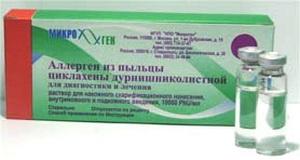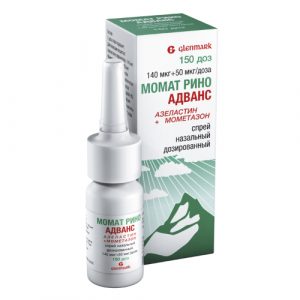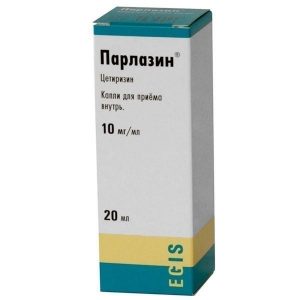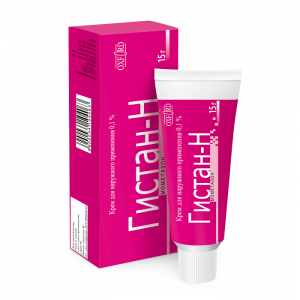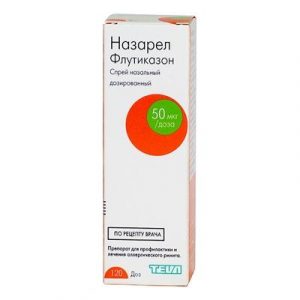Description
Release form
Solution for cutaneous scarification application, intradermal and subcutaneous administration
Pharmacological action of
The main active principle of pollen allergens is the protein-polysaccharide complex, allowing you to diagnose a patient with staging skin samples hypersensitivity to this type of pollen of plants and use it for immunotherapy of hay fever.
Indications
specific diagnosis and treatment of hay fever, atopic bronchial asthma, caused by hypersensitivity to pollen cyclicena foolish.
Indications for diagnosis are the clinical manifestations of the disease and history.
Indications for specific immunotherapy are determined by the allergist on the basis of history, clinical manifestations of the disease, results of skin testing, taking into account contraindications.
Use during pregnancy and lactation
Immunotherapy is contraindicated in pregnancy and lactation.
Special instructions
In case of doubtful results of skin tests, they can be repeated 2 days after the local reaction to previous tests subsided. In case of positive results, it is allowed to repeat skin tests with pollen allergens no more than once a month.
Particularly sensitive patients may experience a systemic allergic reaction and anaphylactic shock. In this regard, in the office where specific diagnostics and specific immunotherapy of patients are carried out, pharmacological preparations and tools for emergency care should be located.
Assistance in general reactions and anaphylactic shock.
Following administration of an allergen, symptoms of clinical manifestations of hypersensitivity to the allergen may develop. With parenteral administration of an allergen, an immediate type of reaction may develop, including anaphylaxis, which manifests itself in the form of urticaria and vascular edema, laryngeal edema, shortness of breath and suffocation. These symptoms often occur after a sensation of generalized itching, burning sensation, hyperemia of the skin, as well as a feeling of fear of death.
As a result of anaphylactic shock, persistent bronchospasm, asphyxiation due to edema of the upper respiratory tract, and collapse may develop.
In this case, urgent treatment is required.
Prehospital care for anaphylactic shock.
1. Immediately stop the administration of the allergen that caused the reaction, lay the patient on a couch (head below the legs), turn the head to the side, extend the lower jaw, and remove any dentures.
2. Put a tourniquet in place above the introduction of the allergen, if possible.
3. Chop the injection site with 0.3-0.5 ml of adrenaline solution (dilute 1 ml of 0.1% adrenaline solution in 3-5 ml of sodium chloride injection solution 0.9%).
4. Apply an ice pack to the injection site.
5. Introduce 0.3-0.5 ml of 0.1% adrenaline solution (for children 0.05-0.1 ml / year of life) in / m or in / in with an interval of 5-10 minutes. The multiplicity and dose of adrenaline administered depends on the severity of the shock and blood pressure indicators. The total dose of adrenaline should not exceed 1 ml of a 0.1% solution. Repeated administration of small doses of adrenaline is more effective than a single administration of a large dose.
6. Provide fresh air or oxygen. In case of violation of the rhythm of breathing or its difficulty to carry out artificial lung ventilation (mechanical ventilation).
7. Urgently call a doctor, at the same time, a resuscitation team is called up.
Hospital care for anaphylactic shock.
1. In an extremely serious condition of the patient and with severe hemodynamic disturbances, 5 ml of 0.01% adrenaline solution are injected slowly in / in, and the effect is stopped. Children 0.1 ml / kg 0.01% solution slowly over several minutes.
2. If blood pressure does not stabilize, immediately start intravenous drip of norepinephrine (phenylephrine, dopamine) 0.2% 1.0-2.0 ml per 500 ml of 5% glucose solution for infusion or sodium chloride injection solution 0.9% .
3. Intravenously inject glucocorticosteroids: prednisone – 60-180 mg (children 5 mg / kg), dexamethasone – 8-20 mg (children 0.3-0.6 mg / kg), hydrocortisone – 200-400 mg (children 4-8 mg / kg). According to the state, the administration of hormones is repeated and continued for at least 4-6 days to prevent allergic reactions of an immunocomplex or delayed type.
4. Only with the stabilization of blood pressure, intramuscularly introduce 2.0 ml of a 2% solution of chloropyramine (children 0.1-0.15 ml / year of life) or 0.1% clemastine.
5. Symptomatic therapy according to indications. With bronchospasm, 10.0 ml of a 2.4% solution of aminophylline in a solution of sodium chloride for injection 0.9% (for children 1 ml / year of life) is injected intravenously. If necessary, cardiac glycosides, respiratory analeptics are introduced.
6. If necessary, the accumulated secretion and vomit are sucked out of the airways, and oxygen therapy is started.
7. Patients receiving beta-blockers are shown additional administration of salbutamol and / or glucagon in / in 1 ml.
8. In acute laryngeal edema, intubation or tracheotomy is indicated.
All patients with anaphylactic shock are subject to mandatory hospitalization for a period of at least 10 days in order to continue monitoring and treatment, as 2-5% of patients who underwent anaphylactic shock have late allergic reactions.
Doses of injected drugs and the tactics of the doctor are determined by the clinical picture, but in all cases it is necessary, first of all, the introduction of adrenaline, glucocorticosteroid drugs. The introduction of phenothiazine and calcium preparations is contraindicated.
Prior to the arrival of the resuscitation team, it is necessary to provide medical care and constant monitoring of hemodynamic parameters and the state of the function of external respiration (HFD).
Influence on ability to steer vehicles, mechanisms.
Not described.
Composition
1 ml
allergen from pollen cycloheena starchy for diagnosis and treatment10000 PNU
Excipients: sodium phosphate, disubstituted, 12-aqueous 0.56 g / l, potassium phosphate, 0.3 g, 5 g, 1 g phenol (preservative) from 0.2 to 0.4%, water for and.
Dosage and administration of
I. Specific diagnosis.
The drug is used for staging skin samples (scarification, prik-test and intradermal). Specific diagnostics, as a rule, are carried out simultaneously with other pollen allergens. During one procedure, it is allowed to conduct up to 15 samples with pollen allergens of various kinds.
Skin tests are placed on the inner surface of the forearm or, if necessary, on the skin of the back.
Along with the allergen, skin tests are performed with a test control liquid and with a 0.01% histamine solution, which is prepared by diluting a 0.1% histamine dihydrochloride solution (1 part) with sodium chloride solution for injection 0.9% (9 parts). The diluted histamine solution is suitable for 6 hours from the date of preparation.
The metal cap of the vial (with allergens or test control fluid) is wiped with alcohol. The central cap cap is removed with sterile forceps, and the rubber stopper pretreated with 70% ethanol is punctured with a sterile needle.
The skin of the inner surface of the forearm is wiped with 70% ethyl alcohol and allowed to dry. A drop of the tested allergen, a drop of the test control liquid and a drop of 0.01% histamine solution at a distance of (30 ± 10) mm from each other are applied to the disinfected skin with a sterile syringe. An allergen drawn into a syringe cannot be poured back into the vial.
When staging scarification skin samples, two parallel scratches 5 mm long are applied through the applied drops with a sterile scarification needle.
When setting prik-tests through the applied drops with a sterile injection needle, a skin injection is carried out to a depth of not more than 1-1.5 mm.
For severe skin reactions, a safe initial treatment dose is selected, for which the allergometric titration method is used.
Intradermal samples are placed in cases where there are discrepancies in the data of clinical diagnostic methods and scarification samples.
Intradermal tests are carried out on an internal surface of a forearm. The skin is pulled down with the movement of the finger, the needle is inserted at an angle of 15 ° to the surface of the skin, it is necessary to ensure that the hole of the needle is completely hidden in the epidermis, the needle should be thin with a short tip.
Sterile, individual for each allergen, labeled syringes with a scale of 0.02 ml, 0.02 ml of allergen and test control liquid are injected strictly intracutaneously, a sample with 0.01% histamine is placed using a scarification method.
Assessment of diagnostic skin tests.
The local skin reaction when staging scarification skin tests, prik-tests is taken into account after 15-20 minutes, and intradermal samples after 20 minutes in the absence of reaction to the test control fluid and in the presence of a positive test for histamine.
Scheme for accounting of scarification skin samples.
Assessment of the reaction Degree of severity of reaction * Size and nature of the reaction
Negative – Absence of blister (papule) and hyperemia, dimensions as in the control with test-control fluid
Positive + Blister (papule) 2-3 mm with hyperemia, noticeable only when skin
is stretched Positive ++ Blister (papule) 4-5 mm, surrounded by hyperemia, noticeable without stretching
skin Positive +++ Blister (papule) 6-10 mm, hyperemia or blister (papule) 6-10 mm with hyperemia and pseudopodia
Positive + +++ Blister (papule) over 10 mm, hyperemia or blister l (papule) more than 10 mm hyperemia with pseudopodia
Doubtful + -Heremia without blister
Scheme accounting prik-tests.
Assessment of the reaction Degree of severity of the reaction * Size and nature of the reaction
Negative – Lack of blister (papules) and hyperemia, sizes as in the control with test-control liquid
Positive + Blister (papule) 3-5 mm with hyperemia up to 10 mm, noticeable only skin tightening
Positive ++ Blister (papule) 5-10 mm, surrounded by a zone of hyperemia with a diameter of 5-10 mm
Positive +++ Blister (papule) 10-15 mm, surrounded by a zone of hyperemia with a diameter of more than 10 mm
Positive ++++ Blister (papule) over 15 mm with pseudopodia, hyperemia with a diameter of more its 20 mm
Doubtful + -Giperemiya without blister
accounting scheme intradermal samples.
Assessment of the reaction Degree of severity of the reaction * Size and nature of the reaction
Negative – Dimensions are the same as in the control
Positive + Blister (papule) with a diameter of 4-7 mm, surrounded by hyperemia
Positive ++ Blister (papule) 8-14 mm in diameter, surrounded by hyperemia
Positive +++ Blister (papule) 15-20 mm in diameter with pseudopodia, surrounded by hyperemia
Positive ++++ Blister (papule) more 20 mm in diameter with pseudopodia and (or) erythema around (additional blisters on the periphery of a pink or bright red color)
Doubtful + -At the site, the blister resolves more slowly than in the control
Note:
* Severity of reaction:
– Negative
+ Weakly positive
++ Position tion
+++ strongly positive
++++ very sharply positive
+ – Doubtful.
II. Specific immunotherapy.
Specific immunotherapy is carried out in cases when it is impossible to exclude contact of a sensitized patient with an allergen. An allergen in specific immunotherapy is administered subcutaneously.
An allergist is responsible for the preparation and use of allergen dilutions under aseptic conditions.
An approximate scheme of specific immunotherapy for pollinosis.
Allergen dilution Dose (ml) Notes
123
10-5
1: 100000
1.0 PNU / ml 0.1
0.2
0.4
0.8 Specific immunotherapy is started after
is diagnosed for atopic disease not earlier than
3-4 months later flowering and
complete no later than 1.5 months before the start of
flowering plants.
Injections are given subcutaneously in the external
surface of the lower third of the shoulder. The first
injection (when diluting allergen 10-5, 10-4, 10-3)
is done daily or every other day, subsequent
injections (dilutions 10-2, 10-1) – with an
interval of 7-10 days. The allergen dose of 0.9-1.0 ml in a dilution of
10-1 is repeated with an interval of 5-7 days before the start of
flowering of trees and grasses. The period of use of
allergen after its dilution is 1 month.
After each allergen injection, the patient
is observed in the office for 60 minutes. The
doctor notes the skin reaction at the injection site of the
allergen and the general condition of the patient.
Contraindication for increasing the dose is
local reaction in the form of an infiltrate of
size more than 25 mm, the general reaction of the body, exacerbation of
underlying disease. In these cases, the dose of
is reduced, the intervals between
injections are lengthened until a good
tolerance is established.
10-4
1: 100000
1.0 PNU / ml 0.1
0.2
0.4
0.8
10-3
1: 100000
1.0 PNU / ml 0.1
0.2
0.4
0.8
10-2
1: 100000 srd
0.2
0.3
0.4
0.4
0.5
0.8
0.8
1.0
1.0
1.0
0.3 srdl 0.3
1.0
Side effects
Local and general reactions are possible with the introduction of the allergen. In some cases, in highly sensitive patients with specific immunotherapy with an allergen, general reactions may appear, which are manifested by symptoms of varying severity
: from mild – coughing, sneezing, headache, urticaria, facial swelling, conjunctivitis, rhinitis, bronchospasm, exacerbations of the underlying disease to anaphylactic shock in rare cases. Local reactions are expressed by the formation at the injection site of edema, hyperemia, occur after 15-20 minutes and last from 30 to 40 minutes.
After each allergen injection, the patient should be observed by an allergist for at least 60 minutes. During this time, the doctor should note the reaction of the skin to the introduction of the allergen and the general condition of the patient. The patient should inform the doctor about distant reactions. In the office where specific immunotherapy of patients is carried out, there must be pharmacological preparations and tools for emergency care.
Drug interaction
Skin tests and treatment with allergens should be performed after:
– 1 week after tuberculin test
– 2 weeks after the use of inactivated
vaccines – 4 weeks after the use of live
vaccines – not earlier than 8-12 weeks after the vaccine BCG
– for 3-5 days, the abolition of glucocorticosteroids and antihistamines of the first generation is required, for 4 weeks – antihistamines of the second generation.
Storage conditions
At a temperature of 2 to 8 ° C. Freezing is not allowed.
Term hodnosty
2 years
Deystvuyuschee substances
Allerhen May p ltsev e
Pharmacy vacation
Po
Form of Treatment
simply entails dlya mestnogo primeneniya
Indications
Pollinosis
